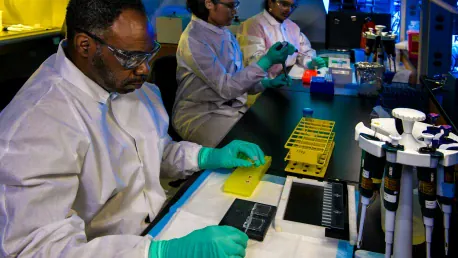NASA’s space biology research grants are shedding light on the profound effects of spaceflight on biological systems, offering invaluable insights into the hazards faced during human space exploration. These grants aim to uncover the intricate biological mechanisms triggered by microgravity, radiation, and other extraterrestrial factors, which are vital for ensuring the safety and health of astronauts on long-term missions. The research funded by NASA’s grants not only informs practical solutions for space travel but also advances our understanding of biological processes and their applications on Earth.
Microgravity’s Influence on Cellular Functions
One of the key areas of study revolves around the impact of microgravity on cellular functions. In the unique environment of space, the absence of gravity interferes with fundamental processes such as cell division, gene expression, and tissue regeneration. For example, aboard the International Space Station (ISS), research involving model organisms like Arabidopsis plants has demonstrated significant alterations in root growth patterns. These findings underscore gravity’s critical role in plant development at a molecular level. Understanding these changes paves the way for designing crops that could thrive in space habitats, contributing to sustainable living in extraterrestrial colonies.
Additionally, minor disruptions in cellular functions under microgravity conditions can lead to significant health issues for astronauts. Studies funded by NASA have shown that microgravity can affect the way cells communicate and interact, potentially leading to compromised tissue repair and immune responses. Model organisms, including various plant and animal species, have helped scientists simulate and analyze these effects, providing vital insights into how human tissues might respond to prolonged exposure to space environments. Such research is crucial for developing medical protocols to maintain astronaut health during extended missions.
Understanding Deep Space Radiation
Another pivotal focus of NASA grants is the study of deep space radiation and its impact on biological organisms. Without Earth’s protective magnetic shield, space travelers are exposed to cosmic rays and solar radiation that can severely damage DNA and increase cancer risks. NASA-funded studies have been simulating space radiation in laboratory settings to better understand these effects on cellular repair mechanisms. Research has identified disruptions in DNA repair pathways, such as the p53 protein network, which typically controls mutations. High-energy particles in space can interfere with these pathways, leading to an increased likelihood of mutagenesis and subsequent health issues. This understanding is essential for developing protective measures, such as drugs or advanced shielding technologies, to safeguard astronauts heading to the Moon, Mars, and beyond.
Studies funded by NASA have shown that space radiation poses unique challenges that are not encountered on Earth. For instance, the high-energy particles can create a complex array of damage within cells, necessitating advanced strategies for mitigation. Through detailed analysis and experimentation, researchers aim to discover cellular defense mechanisms that could be enhanced or supported by medical interventions. Insights gleaned from this research not only help in preparing for future long-duration missions but also improve cancer treatment and radiation therapy on Earth by understanding how cells cope with severe radiation exposure.
Spaceflight Impact on Microbiomes
Spaceflight conditions significantly affect human-associated microbiomes and those residing within spacecraft. NASA’s studies have indicated that the stress induced by spaceflight makes some bacteria more virulent and resistant to antibiotics. Microgravity and oxidative stress contribute to enhanced microbial pathogenicity, leading to the formation of harmful biofilms on spacecraft water lines and surfaces. Understanding these microbial changes is crucial for devising effective solutions to maintain spacecraft hygiene and ensure the safety of astronauts on lengthy missions.
Research reveals how spaceflight stressors alter microbial behavior, transforming typically benign bacteria into potential threats. These insights emphasize the need for vigilant microbial monitoring and innovative countermeasures to mitigate risks. For instance, developing advanced antimicrobial surfaces and robust sanitation protocols can help keep harmful pathogens in check. Enhanced knowledge of microbial dynamics under space conditions also informs strategies to manage infections and enhance health resilience aboard spacecraft, contributing to successful long-duration space travel.
Musculoskeletal Decline in Space
A significant concern during spaceflight is musculoskeletal decline due to the absence of gravity. This lack of mechanical load leads to bone thinning and muscle wasting, akin to accelerated osteoporosis. NASA grants have been supporting studies to investigate these impacts using stem cells and 3D tissue models. Researchers have discovered that microgravity dampens vital signaling pathways like Wnt, which are essential for bone maintenance. By unraveling how mechanical unloading alters these pathways, scientists aim to identify targets for therapies that can maintain skeletal integrity and prevent musculoskeletal deterioration during space missions.
The impact of microgravity on bones and muscles represents a critical challenge for long-term space exploration. Insights from NASA-funded studies highlight the processes that lead to reduced bone density and muscle mass under microgravity conditions, offering potential solutions for mitigating these effects. Investigations into stem cell differentiation and tissue engineering have provided promising avenues for addressing musculoskeletal health. For instance, therapeutic approaches that enhance Wnt signaling or mimic mechanical loading could be developed to support astronauts’ bone and muscle health, ensuring their physical fitness for extended periods in space.
Future Directions and Implications
NASA’s space biology research grants are making significant strides in understanding the profound impacts of spaceflight on various biological systems. These research initiatives provide critical insights into the dangers encountered during human space exploration. Their primary goal is to reveal the complex biological responses triggered by conditions such as microgravity, heightened radiation, and other unique extraterrestrial factors. These insights are essential for safeguarding the well-being of astronauts on extended missions. The discoveries supported by NASA’s funding not only promote practical solutions for space travel challenges but also enhance our comprehension of fundamental biological processes. These advancements have wide-ranging implications, potentially benefiting medical and scientific applications on Earth. NASA’s commitment to this research underscores the importance of maintaining astronaut health and safety, while simultaneously pushing the boundaries of our knowledge in both space and terrestrial sciences.









